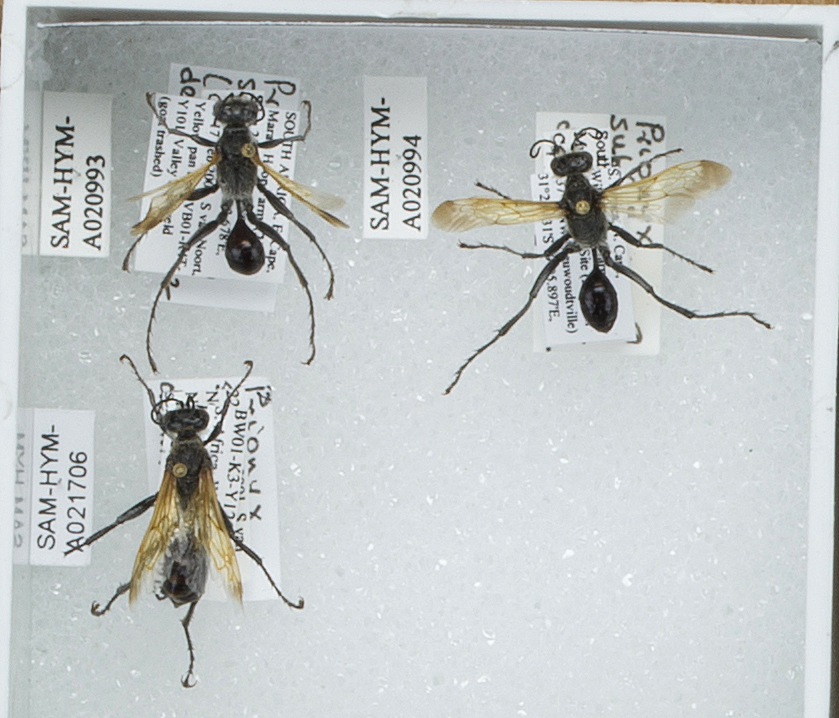Specimens in
Iziko South African Museum, Cape Town (SAMC)

|
Distribution
|
Angola, Ethiopia, Somalia, South Africa, Tanzania,
Zimbabwe. Also Palaearctic region: Albania,
Algeria, China, Croatia, Cyprus, Czech Republic, Egypt, France, Germany,
Greece, Hungary, India, Iran, Israel, Italy, Kazakhstan, Korea,
Kyrgyzstan, Libya, Malta, Mongolia, Morocco, Oman, Palestine, Poland,
Portugal, Romania, Russia, Slovakia, Spain, Tajikistan, Tanzania,
Turkey, Turkmenistan, Ukraine, Uzbekistan. |
Biology
|
Excavate nests in soil and are mostly gregarious.
Colonies may exist for many years. They prey on grasshoppers (Orthoptera)
in the family Tettigoniidae, and less often crickets in the families
Gryllacrididae and Gryllidae (Bohart & Menke, 1976). |
References
|
Bohart, R.M. &
Menke, A. S. 1976. Sphecid Wasps of the World: a
Generic Revision. University of California Press, Berkeley, California.
Brothers D.J. 1999. Phylogeny and
evolution of wasps, ants and bees (Hymenoptera, Chrysidoidea, Vespoidea and
Apoidea) Zoologica Scripta 28: 233–250.
Finnamore, A.T. & Michener, C.D. 1993. Superfamily Apoidea (pp.
279-357). In GOULET, H. & HUBER, J. (eds). Hymenoptera of the World:
an identification guide to families. Research Branch, Agriculture
Canada, Ottawa, Canada, 668 pp. |
Links
|
CATALOG OF WORLD SPHECIDAE
sensu lato (= Apoidea excluding bees) compiled by
Wojciech J. Pulawski (California Academy of Sciences). |
Credits
|
Photographs © Simon van Noort (Iziko Museums
of South Africa).
|
|